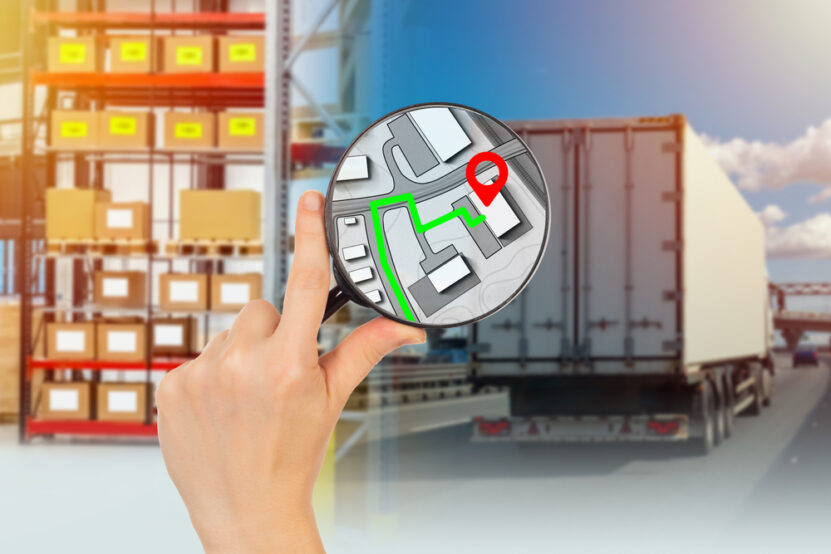
In transport and logistics, small margins can make the difference between profit and loss. That’s why fleet tracking systems have shifted from being “nice-to-have” tools to essential business infrastructure. They don’t just tell you where vehicles are, they help keep drivers safer, operations leaner, and budgets under control.
This article will break down how modern fleet tracking technology delivers on those three pillars, and why companies of all sizes are investing in smarter systems.
Key Points
- Safety ─ Monitors driver behavior, provides real-time alerts, and aids in accident investigation.
- Efficiency ─ Optimizes routes, reduces idle time, and streamlines maintenance scheduling.
- Cost Control ─ Cuts fuel and maintenance expenses, prevents unnecessary overtime, and can reduce insurance premiums.
- Compliance ─ Automates reporting, ensures adherence to regulations, and boosts accountability.
- Adoption ─ Gains driver trust by focusing on benefits like protection and support rather than surveillance.
The Role of Fleet Tracking in Modern Operations
Fleet tracking works by collecting real-time data from GPS devices installed in vehicles, paired with software that processes and displays that information in an accessible way. This isn’t limited to a map with blinking dots, advanced platforms integrate driver behavior monitoring, route optimization, and even predictive maintenance alerts.
The goal is straightforward: better information for better decisions. And when managers can see what’s happening on the road in real time, they can quickly address safety risks, eliminate inefficiencies, and make cost-cutting decisions backed by data.
Safety ─ Reducing Risk for Drivers and Cargo
One of the strongest arguments for implementing a fleet tracking system is its ability to directly improve driver safety.
- Monitoring driving behavior – Modern systems can detect harsh braking, sudden acceleration, or speeding. By identifying risky patterns early, managers can coach drivers before small issues turn into accidents.
- Real-time alerts – If a vehicle deviates from its planned route or experiences an unexpected stop, alerts are sent immediately. This allows rapid response to possible breakdowns or security issues.
- Incident reconstruction – In case of an accident, tracking data provides precise timelines and locations, which can be critical for insurance claims and legal defense.
For companies operating in sectors where cargo theft is a risk, this tracking also acts as a deterrent. Criminals are less likely to target vehicles that are monitored closely.

Efficiency ─ Doing More With the Same Resources
Efficiency gains from fleet tracking often surprise businesses. It’s not just about finding faster routes, it’s about redesigning how time and resources are used.
Here’s a quick snapshot of where those gains come from:
|
Efficiency Factor |
Impact on Operations |
| Optimized routing | Reduced fuel consumption and faster delivery times |
| Elimination of idling time | Lower fuel costs and less wear on engines |
| Better load management | Fewer trips needed, reducing overall mileage |
| Maintenance scheduling | Prevents costly breakdowns by servicing vehicles at optimal times |
Even small percentage gains in these areas can have a significant cumulative effect over a year.
Partnering with the Right Provider
Choosing the right tracking solution can make or break the return on investment. Some providers simply offer GPS tracking, while others deliver a full ecosystem of tools for safety, efficiency, and compliance.
For example, Fleetview Solutions offers systems that combine live tracking with driver performance analytics, fuel usage reporting, and compliance management. This holistic approach ensures that the technology serves multiple operational goals at once, rather than functioning as a standalone tool.
Cost Control ─ Turning Data into Savings
Fuel and maintenance make up a large percentage of fleet operating costs. Without accurate data, companies often rely on estimates and gut feeling, which can lead to overspending. Fleet tracking turns these hidden costs into visible, measurable figures.
- Fuel savings – Route optimization and idle time reduction directly lower fuel bills.
- Lower maintenance costs – Predictive maintenance helps avoid expensive breakdowns.
- Reduced overtime payments – Time-on-road data ensures accurate driver hours reporting.
- Insurance discounts – Many insurers offer lower premiums to fleets with proven safety records.
When all these cost-control measures work together, the impact can be substantial. In competitive markets, that difference can help secure more contracts without raising prices.

Measuring the Impact of Fleet Tracking
Numbers tell a powerful story. While it’s easy to talk about “improved safety” or “better efficiency,” the real value of fleet tracking becomes clear when you compare hard data before and after implementation. The chart below illustrates how a typical business can see measurable gains across fuel use, delivery times, maintenance costs, and accident rates within the first year of using a comprehensive tracking system.
When considering a provider, it’s worth asking: does this system give us only location data, or does it help us run a safer, smarter, and more cost-efficient fleet?
Fuel savings come from optimized routing and less idle time. Faster deliveries stem from better route planning and schedule adjustments in real time.
Lower maintenance bills result from preventative servicing rather than costly repairs. Fewer accidents are linked to real-time driver behavior monitoring and corrective feedback.
Compliance and Accountability
Depending on the industry, fleets may need to comply with regulations on driver working hours, cargo temperature control, or emissions. A robust tracking system automates much of the reporting required for compliance.
It also improves accountability within the team. Drivers know their performance is visible, which tends to naturally encourage safer and more responsible behavior. Managers, in turn, have hard data to back up performance reviews, rewards, or corrective actions.
Overcoming Resistance to Tracking
While the benefits are clear to management, drivers may see fleet tracking as intrusive. The key to overcoming this is transparency: explain that the system is not there to “spy,” but to support them.
When drivers see that tracking helps protect them from false accident claims, speeds up assistance during breakdowns, and makes schedules more predictable, adoption rates improve. It becomes a partnership rather than surveillance.

Bringing It All Together
Fleet tracking isn’t a magic button, it’s a tool. The real value comes from how businesses use the data it provides. Safety improves because risky driving is identified and addressed. Efficiency rises because routes, schedules, and loads are optimized. Costs fall because every decision is based on accurate, up-to-date information.
When implemented thoughtfully, the return on investment is often visible within months, making it one of the most impactful upgrades a fleet-based business can make.
